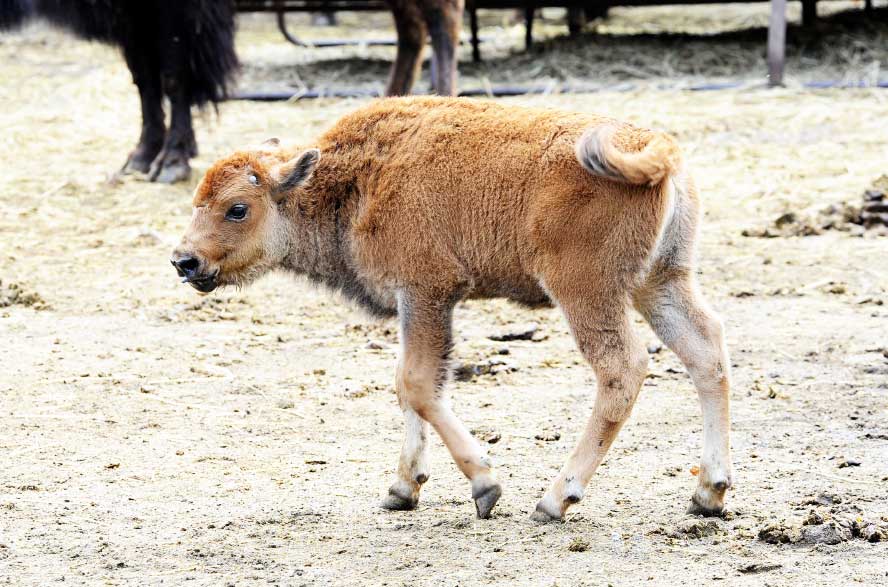
Confederated Salish Kootenai Tribes
Off-Reservation Bison Hunt
Click a Topic to Open It. Click it Again to Close it.
Equipment, Tools, and Support
The hunting of bison is unlike any other hunt experience in Montana. Adult bull bison can weigh in excess of 2000 pounds. To put it in perspective, an average bull elk weighs just over 700 pounds.
Firearms and ammunition
The only means of taking a bison allowed are center-fired rifles. A 150-grain or larger bullet is required.
Hunter Orange
There will be lots of other hunters in the area. Not all will be as careful as you. 400-square inches of hunter orange is strongly recommended.
Recommended equipment and tools
If you plan to field dress your own animal, bring:
- many sharp knives,
- sharpening system,
- large bone/meat saw,
- axe,
- sturdy rope, and
- large plastic tarps.
Block and tackle and a winch may be necessary, as well as a sled or game cart.
Snow machines, ATVs or horse may be necessary, but check with the US Forest Service for restrictions.
Help in the field
Bring MANY fit friends to assist with field dressing and retrieving your animal after the harvest. Remember, a bull can weigh three times what a bull elk weighs.
Hunting Outfitters
You may want to hire a local outfitter to assist with field dressing and retrieval. A current list of outfitters in the area will be provided.
See the Hunting Outfitter contact information in the orientation packet.
Shot Placement

Shot Placement
There is one preferable shot placement for the most humane and quick kill. It is a brain shot in the ear. Even though bison are very large game animals it is possible to shoot through them. Be sure of your target and what lies beyond it.
Remember: It is a felony offense to enter YNP to retrieve a shot bison.
Choosing an Animal

Avoid shooting a collared bison because it may be contaminated with drugs used in wildlife management

Do not leave a calf behind.
Use a Spotter

Role of a spotter
One person should be designated as a spotter to keep track of which animal you shot. If it’s necessary to shoot again, do not shoot until you have clearly identified the animal you previously targeted.
If You Wound a Bison
If You Wound an Animal
If you accidentally wound a bison, it is your responsibility to do everything you can to locate and kill that animal. If you accidentally shoot two, please field dress both animals immediately and call Tribal Game Wardens at 883-2888 ext. 7270. You can call any warden on the contact list provided or call Tribal Dispatch at 406-675-4700.
Emergency Contact Information
Tribal Game Wardens will patrol the hunt area and assist in the enforcement of all applicable hunting and hunter laws. Wardens will also respond to bison hunt emergencies. Hunters may also contact the Gallatin County Sheriff’s Dispatch (for areas west of Yellowstone National Park) or the Park County Sheriff’s Dispatch (for areas north of Yellowstone National Park) in the event of an emergency.
Montana Fish, Wildlife and Parks will not direct hunters to the location of bison in the field or assist with the field dressing and retrieval of bison.
Tribal Game Warden Information:
TR-3 Dan McClure, Chief (406) 241-3345
TR-4 Paden Alexander, Sergeant
TR-5 Phillip Joe Paul, Sergeant
TR-6 Jesse Drennan, FTO/CPL
TR-7 Asa Askan
TR-8 Noah Durheim
TR-9 Arnold Torosian
TR-10 Rylee Arlee
Tribal Game Warden Office Number: 883-2888 ext. 7270
Other Emergency Contacts:
1-800-TIP-MONT — 1-800-847-6668
Hebgen Lake Ranger District 406-823-6961
Gallatin County Sheriff’s Dispatch: 406-582-2124
Gardiner Ranger District 406-848-7376
Park County Sheriff’s Dispatch: 406-222-4172
The Division of Fish, Wildlife, Recreation and Conservation is open Monday through Thursday from 7 a.m. to 5:30 p.m.
Bison hunt hot line
For updated bison availability from the field, call the bison hunt information hot line at 406-275-2848.
Hunter Safety
Bison are extremely large animals. They can move quickly and be unpredictable.
A wounded bison may be extremely dangerous. It is important to remain aware and alert in the field under all circumstances.
Bull bison may become curious and aggressive when another animal is wounded and down or killed. This is an instinctual response. If you shoot a bison in close proximity to other bison, use caution when approaching and conducting game retrieval. A wounded bison may be extremely dangerous. It is important to remain aware and alert in the field under all circumstances.

“There’s only two reasons why a buffalo raises his tail. The first is to charge, and the second is to discharge.”
After You Shoot
• Field dressing and retrieval
Given the massive size of an adult bison, field dressing and retrieval of this game animal can be quite a challenge. Bison have very thick hides, which retain a lot of heat. You must be able to gut, skin, and process your bison immediately while in the field to avoid bone souring and waste of game.
• Waste of game
Hunters should be prepared to quickly process a harvested animal. Confederated Salish & Kootenai Tribes Game Wardens will enforce all big game hunting laws, including waste of game. The penalty for waste may include a revocation of one’s hunting and fishing privileges.
• Tribal Check Stations
If you come upon a game check station, you are required by law to stop.




